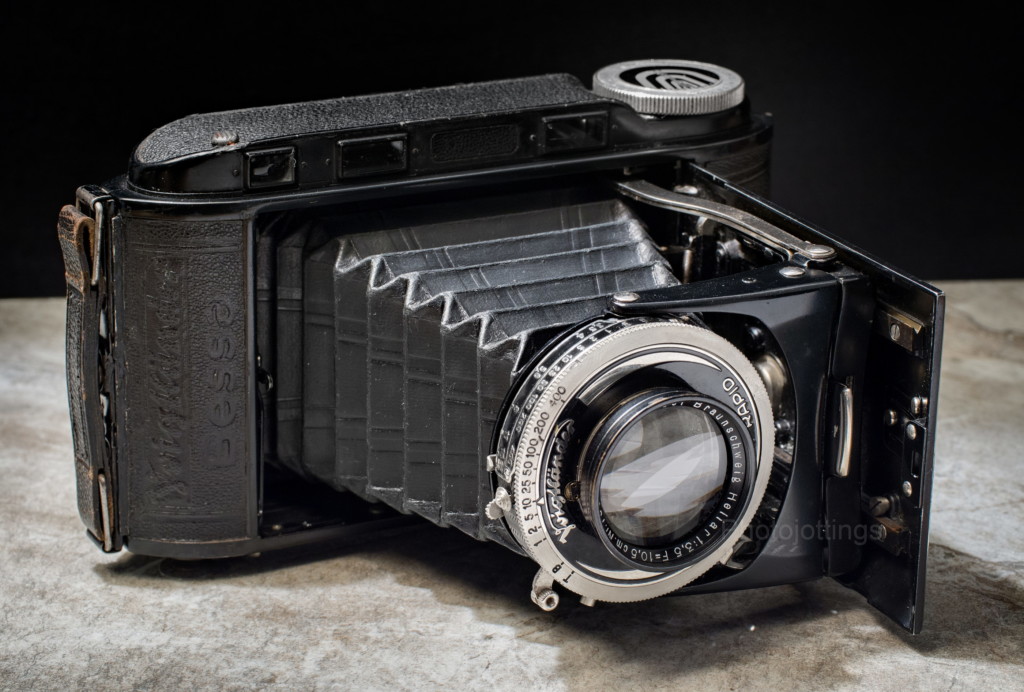
This week our review camera is the folding and pocketable pre-war Voightländer rangefinder Bessa, featuring the top of the line, five element Heliar lens. Another nice feature for this Bessa is the magnified (zoomed in view) rangefinder window for more easily seeing, and setting the focusing distance, with the other window used for composing the image. Additionally, the camera focuses by moving the entire lens and shutter assembly back and forth like a view camera, not simply with a turning front focusing lens element as most folders have. Unit focusing like this allows slightly closer focusing, up to one meter, and the ability to focus the camera even when it’s folded up. Another plus is the ‘coupled’ rangefinder, meaning when you use the rangefinder to align the double image, it focuses the lens at the same time, instead of ‘uncoupled’ which is having to take the reading from the rangefinder scale, and then set it on the lens distance scale.
Many folders from this era up to the 1950s came with reduction masks for added economy. The flimsy stamped metal masks allowed 6×4.5mm size images, which doubled your shot count on a roll of film, going from 8 to 16 images. The Bessa has a little knob on top of the viewfinder to change the view from a full horizontal orientation to a reduced vertical, such as what you’d find on a typical 645 camera. My copy doesn’t have the original Voigtländer ‘half-frame’ mask; but I wouldn’t use it anyways as it turns the lens into a medium telephoto due to the crop.
I’ve had three of the Bessa 6×9 cameras with Heliar lenses through the years, but I only have the review copy now. All are a little different as far as optical characteristics, (especially resolution) are concerned when looking really closely at high quality scans. One was super sharp almost wide open in the centers, but had very soft sides; my other two had less sharp centers, but much sharper sides at large apertures; not a big deal but I thought I’d point that out and hope you keep that in mind when looking at the test shots. Heliars are often over-hyped, and are not necessarily super sharp at all apertures as many people claim unless you look at small prints or scans. However, they have other nice qualities that may be more important to users than mere resolution.
When measuring the size of the negative area, I’ve noticed these Bessas have an unusually long length, running 87mm wide instead of the normal 83mm; it’s not a huge amount, but noticeable in the close frame spacing if you shoot a lot of 6×9 and scan your own. The Bessa negative size is about 57×87, or 4959mm², and the normal is around 56×83, or 4648mm².
A couple of minor warnings if you decide to try one: there is no double exposure prevention on these old cameras, so don’t forget to wind the film after each shot, otherwise it’s two pictures wasted out of a total of eight!! Also, the tripod threads are factory 3/8″-16, so you have to buy reducer bushings (B&H, Amazon, ebay) for use on more common 1/4″-20 tripods.
I bought this well used and scuffed up copy from the famed Certo6 complete with a CLA, and it works great.
With the introduction out of the way, let’s check out the specs!
Name; Voigtländer Bessa Rangefinder.
Manufactured by; Voigtländer & Sohn A.G. Braunschweig, Germany.
Made in; Braunschweig?, Germany.
Date of manufacture; ca1936.
Price; a 1938 catalog list price is $80 for the Bessa rangefinder with Compur-Rapid and Heliar. Get a good working copy on ebay for around $300-$600.
Build material; metal body, thin covering with fine pebbled finish, and leather bellows. Fit and finish are very good.
Box contents; camera, instruction manual, ‘half-frame mask, and maybe a case.
Weight; 24.1 oz (684g) no film.
Dimensions; my measurements; 6.5″ (165mm) long, 3.6″ (90mm) tall, 1.75″ (45mm) deep closed, and 5.25″ (133mm) open.
Focal length; 105mm, 4-1/8″.
Aperture; F/3.5-F/22, but goes to F/32 and smaller by moving the dial past F/22.
Focusing; 1.0m to infinity. Focusing is of course manual. You turn the top dial to the estimated distance, or set the distance using the rangefinder with the same dial.
Viewfinder; small uncoated. Decent viewing with your eye up against the frame. No guide lines or parallax correction. Has a built-in reduction mask for 6×4.5 vertically oriented images.
Light meter; none.
Approximate resolution; good film and technique will make sharp 16×20″ or larger prints. See sample images farther down the page.
Distortion; none of my images show any discernible distortion, but I didn’t check very closely.
Light fall-off; I notice moderate to heavy “corner shading” when shooting in the area of F/3.5-5.6; at smaller apertures it doesn’t show much.
Color fringing; none that I notice.
Back ground blur or “bokeh;” looks good when close to the subject at wide apertures.
Lens; 105mm F/3.5 Heliar anastigmat, uncoated five elements in three groups. Described and marketed by Voigtländer as a quintuple super lens “Heliar” with its famous plastic’ modeling. Apparently they’re calling the black plastic around the front lens element ‘modeling.’ Lens surround outside diameter is about 37mm. Most likely will take 37mm push-on type filters and attachments, but I think they’re listed as 36.8mm.
Shutter and speed; Compur Rapid, 9 speeds, 5 leafs; time, bulb, 1 sec, 1/2, 1/5, 1/10, 1/25, 1/50, 1/100, 1/200 and 1/400. Also included is a ten blade aperture with a range of F/3.5 to F/22+. Time and bulb mode work without cocking the shutter. The self-timer takes about 10 seconds to trip. Note; it won’t work in ‘B’ (bulb) or ‘T’ (time) mode. No Cable release socket.
Film; standard 120 roll, 8 pictures per roll, each with an approximate area of 57mm x 87mm. The 2¼ x 3¼ (6×9) picture area is 5.4x larger than 24x36mm on 135 film. With the mask, you get 16, 2-1/4″ x 1-5/8″ (6×4.5mm) images.
ISO, DIN; back then it was around ISO 50 or 18° DIN.
Flash; none, but has PC sync port.
Power; no batteries required.
Accessories for this model; rubber hood, leather case, some B&W filters: yellow, green-yellow, and portrait type ‘Focar’ lens attachments; I think they’re listed as 36.8mm.
Crippling features and omissions; no double exposure prevention, so you’re bound to get some unintended double exposures now and then. No cable release socket; in the square cut-out on the shutter where a cable release would normally go, Voigtländer installed a flash sync port instead.
Good features; the rangefinder view is magnified, and it’s very easy to see the converging lines for acquiring exact focus—if it’s aligned properly. Of course the folding design is great too, It’ll easily fit in the back pocket of jeans, with the size being about the same as a medium to small 35mm film camera with a small lens attached.
Quirks; none noticeable so far.
Problems; none really; but for users that are new to old folders, make sure you check the bellows for light leaks, and the shutter speeds, they’ll most certainly be off, especially at the lower, and highest speeds.
Product shots with descriptions. Click pictures for larger versions.
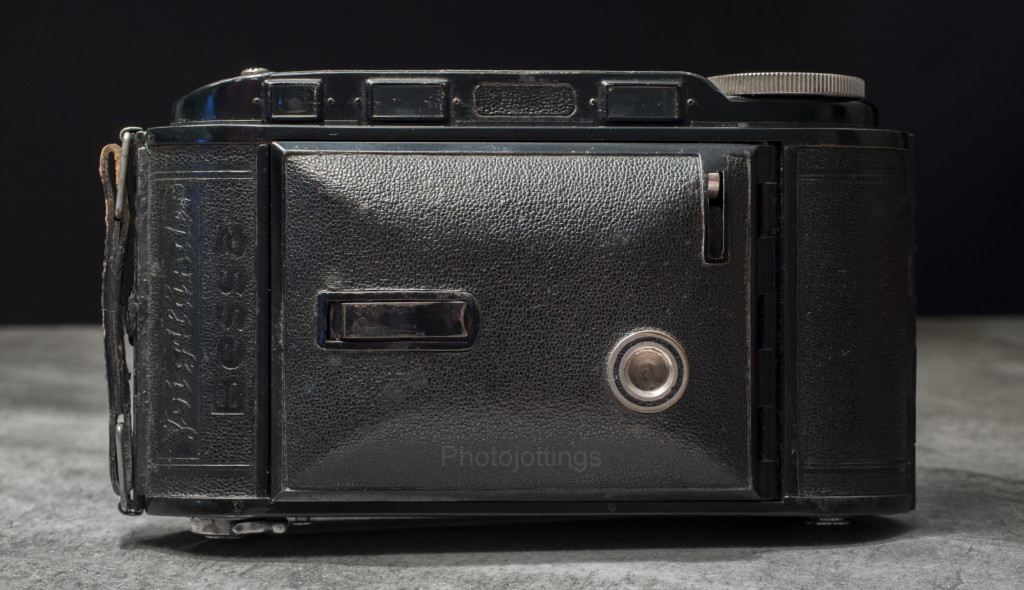
A front view of the Bessa Rangefinder. The embossed name and model are neat, although not very legible here. The vertical leveling foot is located at the left part of the front cover, it swings out for table top shots. The vertical slot off to the right is for the shutter button, and it pops out when you open the cover. The large circular hole is a 3/8″-16 tripod socket, you’ll need a reducer bushing for more common 1/4″-20 sockets.
Along the top from left to right are: viewfinder window for composing only; it also has a reduction mask for half frame shots. The two long rectangular windows are for the coincidence (ghost image, split image etc) rangefinder.

A view of the camera when opened and ready to shoot. The leveling foot is in use here, as is a reducer bushing for the bottom tripod socket. To fold the camera you push down on the chrome metal tab under the lens. The shutter cocking button is the lever with two knurled knobs at the end, you push this over until it stays, and then push the shutter button on the front cover. This copy doesn’t have the filter holder, but is ready for one to be attached just below the lens where you see the chrome mounting boss with a screw hole on each end. The square cut-out on the side of the shutter is where a cable release would normally go, but Voigtländer has instead installed a flash sync port.

The top view shows the large focusing dial (on the left); it’s also a depth of field estimator. For changing the viewfinder to vertical half frame orientation, you turn the little round button on the right side (with red dot) clockwise.
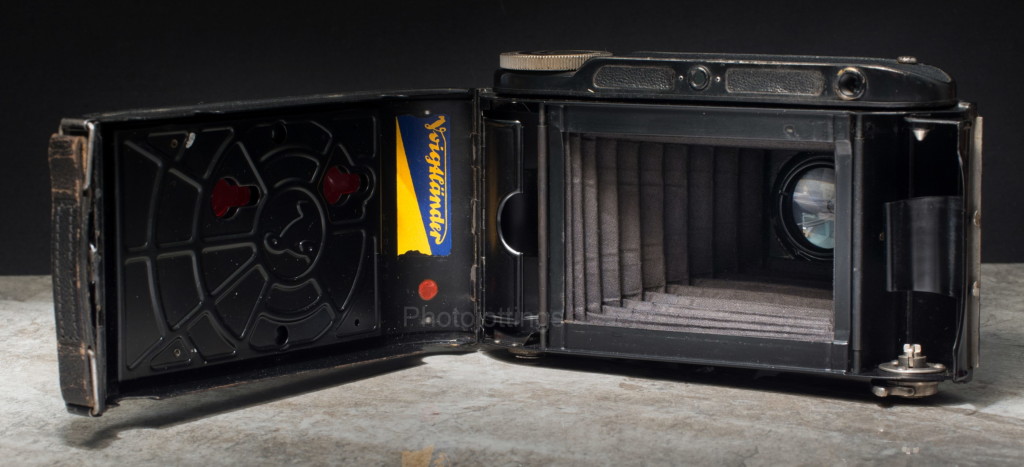
With the back open you can see inside the bellows to the back of the lens, and the film gate advance rollers. Notice the odd ’embossed’ pressure plate. The new film roll goes on the left, with the take-up spool on the right. The black spool covers swing out for easy loading. Voigtländer reminds you via a colorful sticker to buy their own film; back then it was around ISO 50 or 18° DIN.

The back of the camera has two little red windows for properly advancing the film, the one on the left is for full 6×9 pictures, and both are used for half frame. Back then there were no markings on the backing paper for 6×4.5, so you had to use the 6×9 markings and align the number at the left window first, take your shot, then align the same number on the right for correct spacing and non-overlapping pictures.
The back cover opens by sliding up a switch on the right side of the camera under the leather hand strap.
The little round window in the center is the rangefinder, it has a magnified view, it’s easy to see the converging lines and acquiring the proper focusing distance. The window on the right is the composing viewfinder.
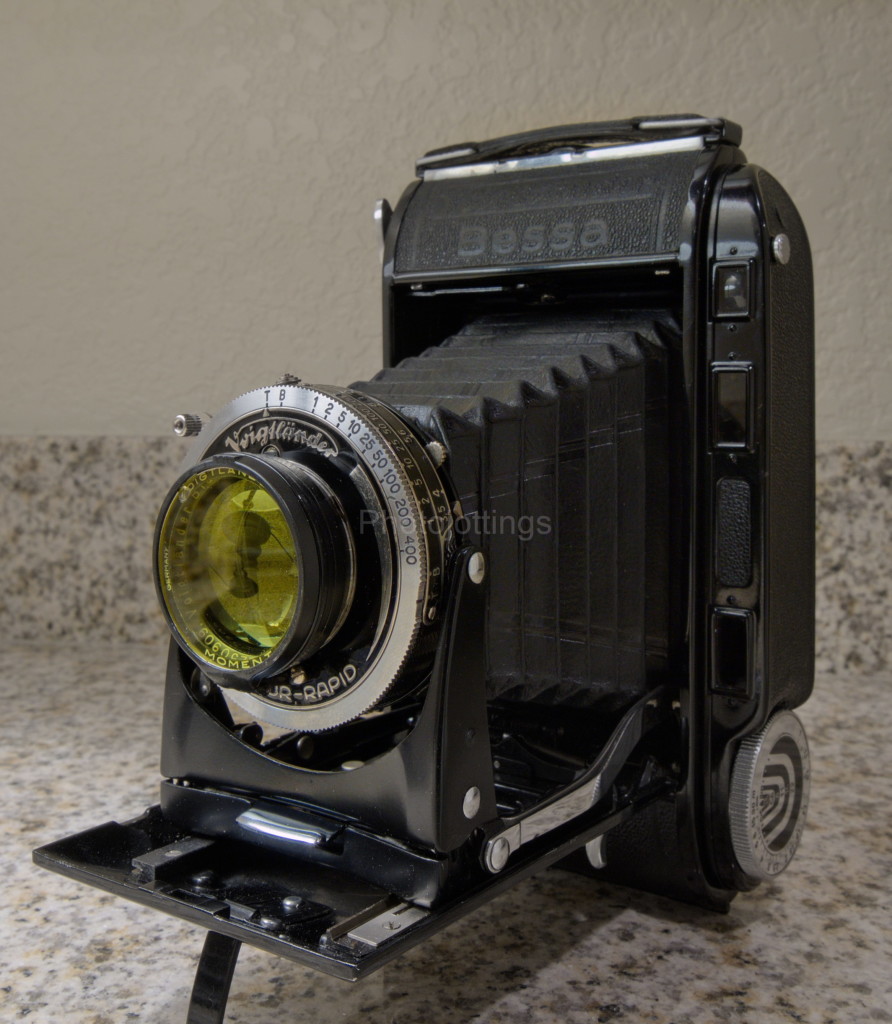
My first Bessa with Heliar and hinged yellow ‘moment’ filter; it was a really nice copy ca1938.
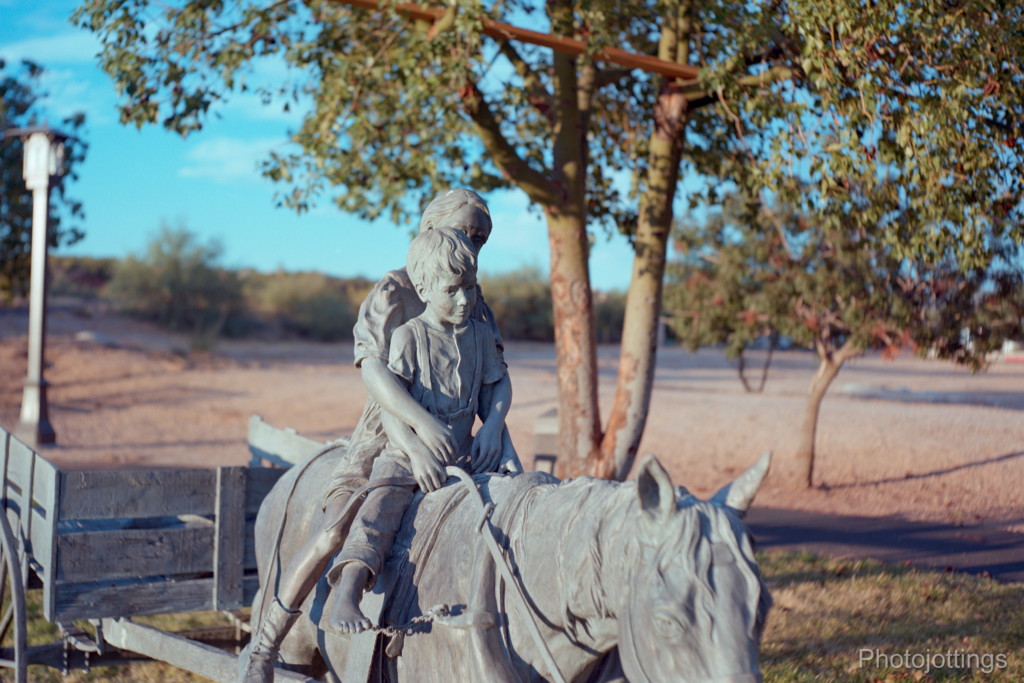
Poorly framed picture of children pulling a cart at F/5.6. Smooth background blur, and sharp central area. Kodak Portra 400.
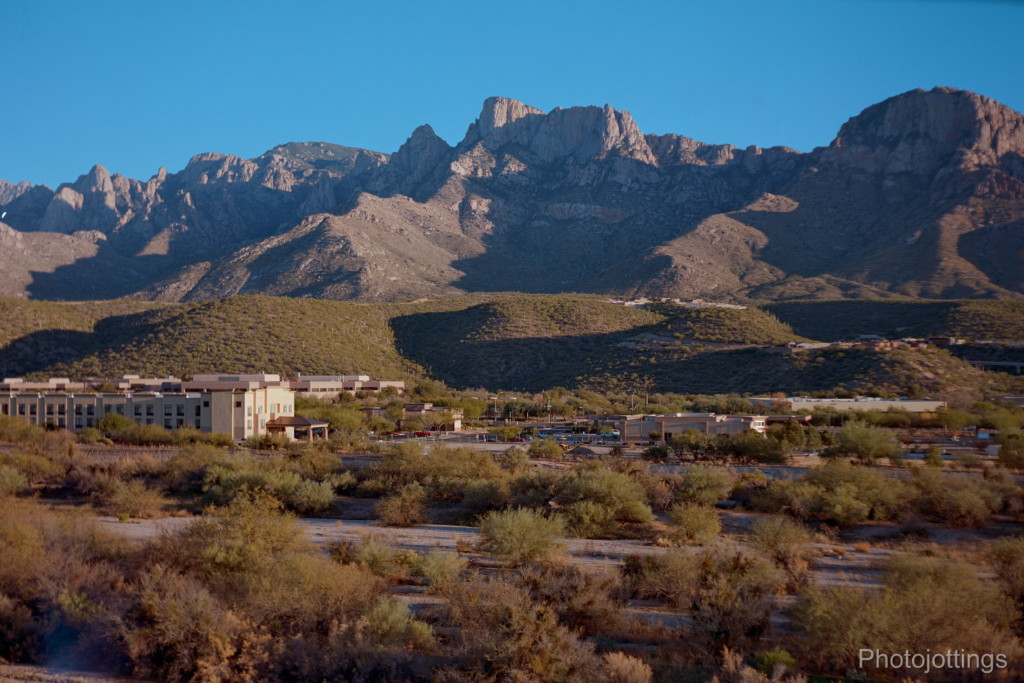
Very sharp central area at F/5.6 using my first Bessa. The sides are very soft, especially on the right. Kodak Portra 400.

A 1938 ad encourages you to watch an aeroplane land at night, and catch the action on your Voigtländer Rangefinder BESSA!
Test images below.
Here are some test images scanned on a Nikon Super Coolscan 9000 ED. All are 6000×4000 pixels wide; there is no additional resolution from scanning at a higher sample rate. Kodak Ektar 100 used for all shots. Tripod used, no filters. Click for larger images.
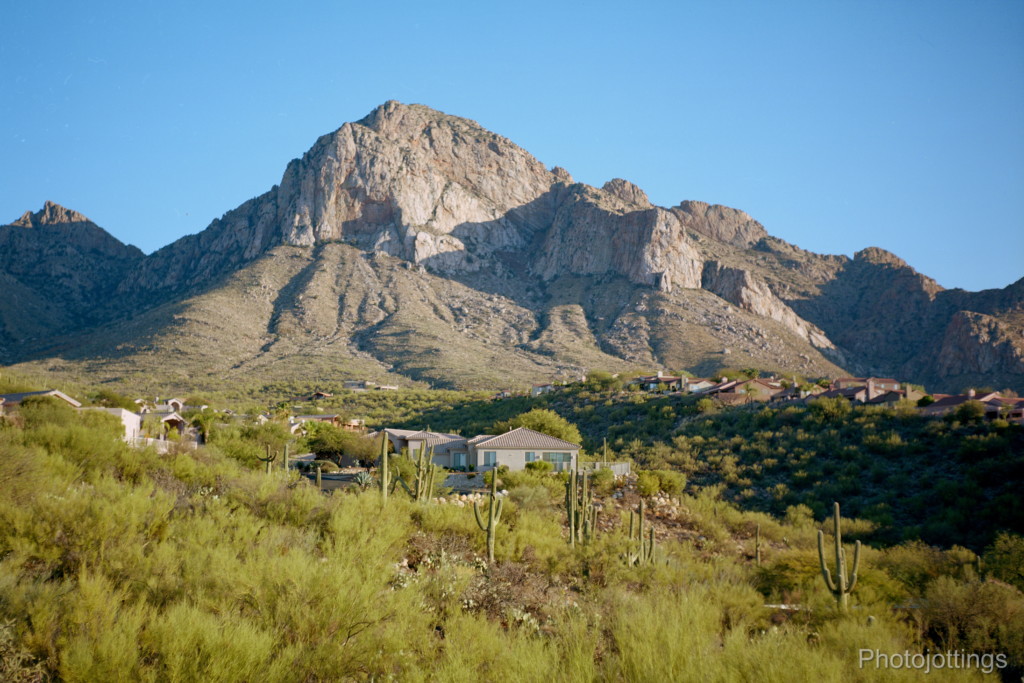
F/3.5. Soft, with good contrast, and usable for small prints.

F/5.6. A slight increase in contrast and resolution overall.
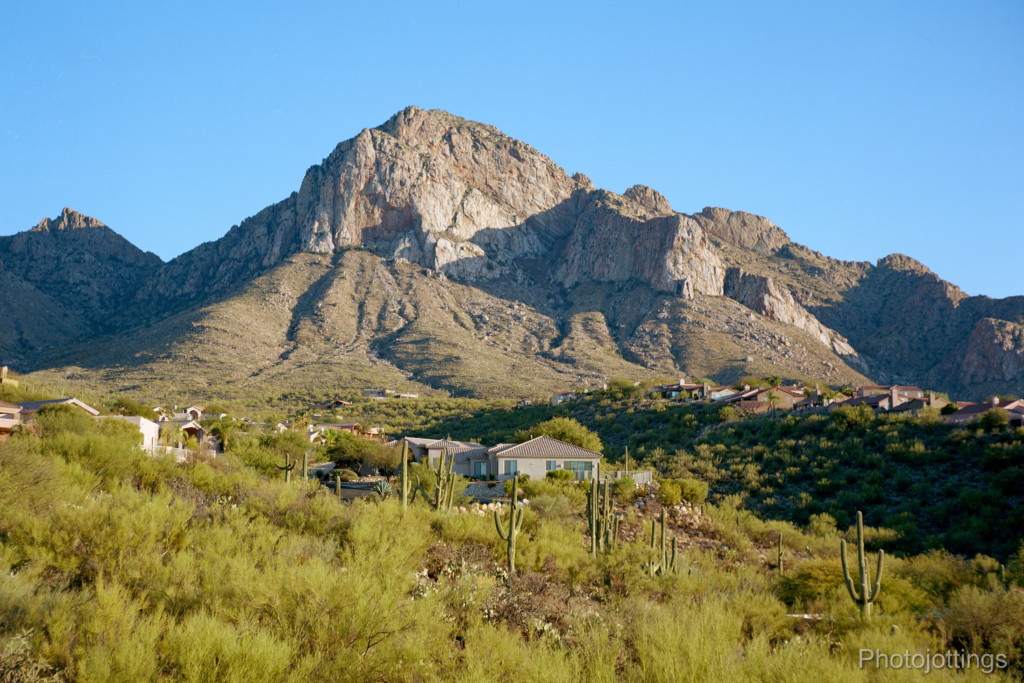
F/8. Sharpness and contrast look better over the entire frame.
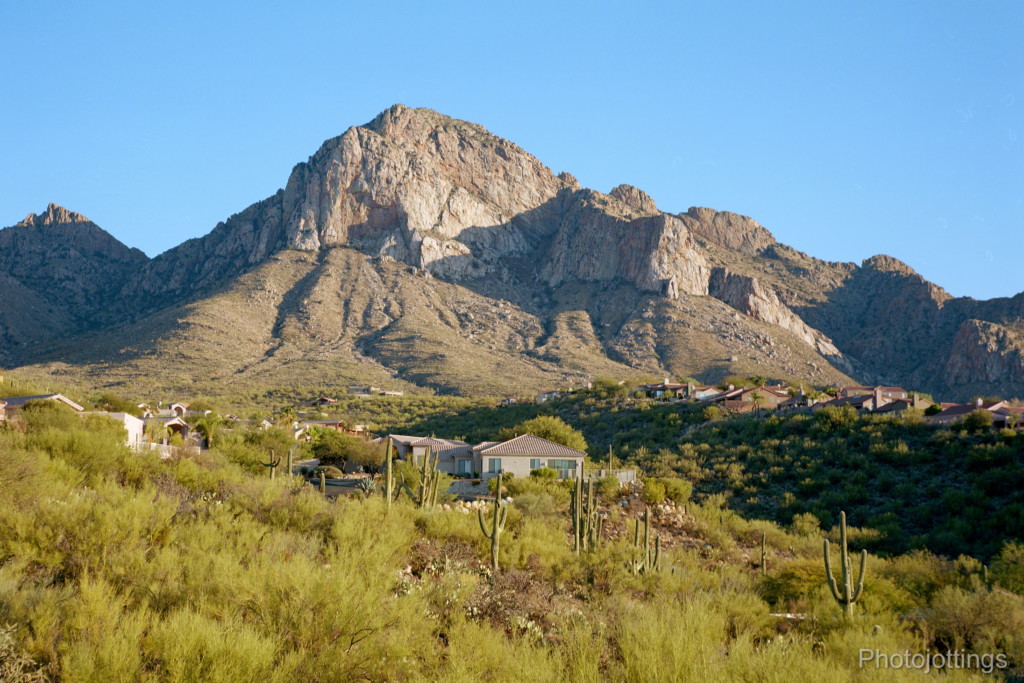
F/11. Not much different than F/8.
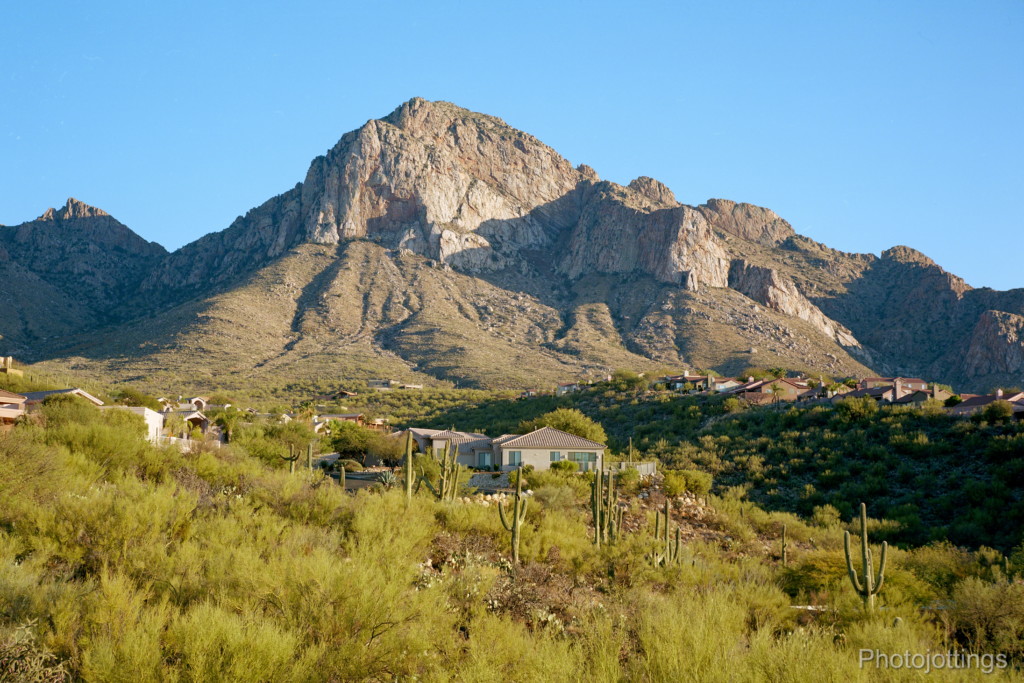
F/16. A big jump in resolution, especially along the sides.
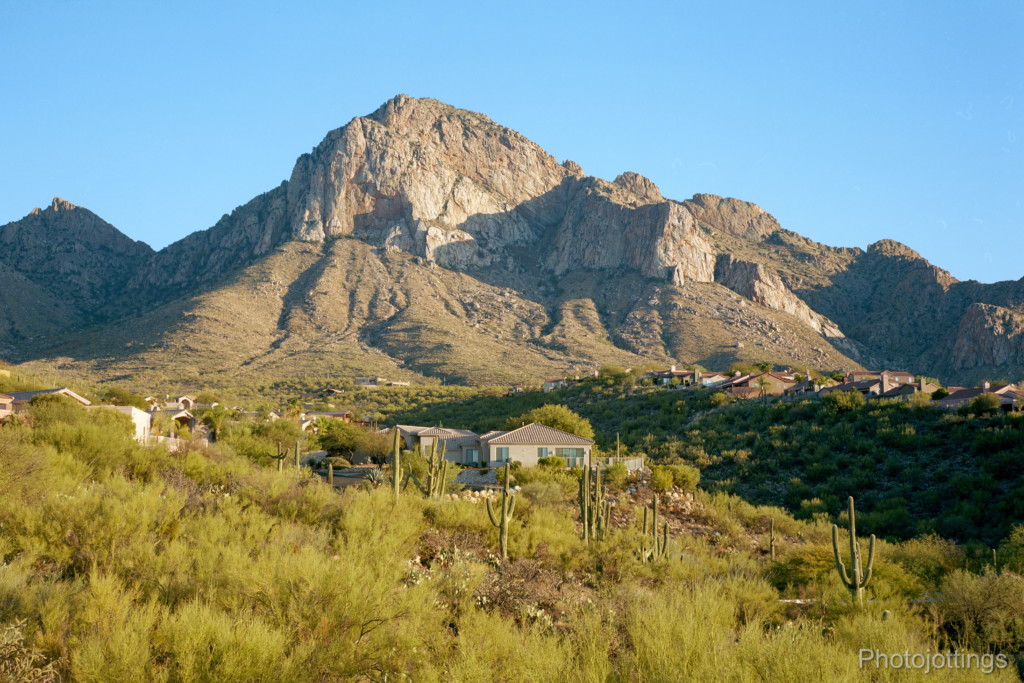
F/22; I see a slight softening due to diffraction, although a little sharper along the extreme right side.
To sum up the lens test; I see some minor camera movement at F/5.6, F/8 and F/11, but it does effect the sharpness in the central area, however the sides seem unaffected as they are still soft at those apertures. The lens seems to max out for landscapes at F/16 which is quite good for a 6×9 folder, with noticeable diffraction occurring at F/22. The Heliar exhibits good to excellent contrast at all apertures, only degrading a small amount at F/22.
I’ll have to redo the tests at some point. I had to trip the shutter by hand as it has no cable release socket, and combined with a long shutter speed in the late afternoon, you do get some camera jitter sometimes, darn it.
Conclusion.
Overall, the Voigtländer Bessa turned in an excellent review; it’s one of the best folders available today at a reasonable price. There are a couple of things that make this 1936 Bessa stand out from the rest of the medium format folder crowd. First, the magnified rangefinder view is very helpful; it allows you to nail the focus even at close distances. The coupled rangefinder is also a nice feature, as is the combination lens and shutter back and forth focusing method. Although the Heliar is an excellent lens, the four element Skopar is no slouch, and quite a bit less expensive.
There are a couple of missing features from the Bessa that are found on some less expensive cameras, but maybe not from the late 1930s; it has no double exposure prevention system, so you’ll wind up with a few double exposures occasionally, even if you’re careful like I normally am. Voigtländer installed a flash sync port on the shutter instead of the more common cable release, which makes tripod use tricky because you still have to use the shutter button; that’s the reason my test pics show some movement.
The Heliar is supposed to be a nice portrait lens, with a pleasing background blur, that’s how they market it, and maybe why they didn’t bother with a cable release, it’s designed to be used hand-held. Although the Heliar performed very well stopped down to F/16 with excellent sharpness and contrast, I was a little disappointed in the centers at wide apertures; the Agfa Record with Solinar did much better, even taking into account the camera jitter. As I said in the beginning, my first Bessa Heliar had centers that were sharper at wide apertures, but the sides were noticeably soft, more so than this one. So who knows, maybe I’ll get another Heliar and do yet another test series.
Anyhow, that’s it for the Voigtlander Bessa rangefinder review, two thumbs up for this pre-war folder, and don’t forget: please consider buying through my links and help support the site. Thanks for visiting!
Before purchasing an old folder: As with all old cameras, especially ones with bellows, you’ll need to check the shutter speeds for accuracy, and the bellows for holes before you use it, so you don’t wind up paying for a roll of film, and processing, and maybe even scanning only to learn the camera was screwed up: that could easily cost you $15-$20. I’d pay a premium for one where the seller has had the camera cleaned, lubed and adjusted, and can verify, or hopefully guarantee it’s ready for taking pictures.
The Bessa takes readily available 120 film, B&H, Amazon, eBay.